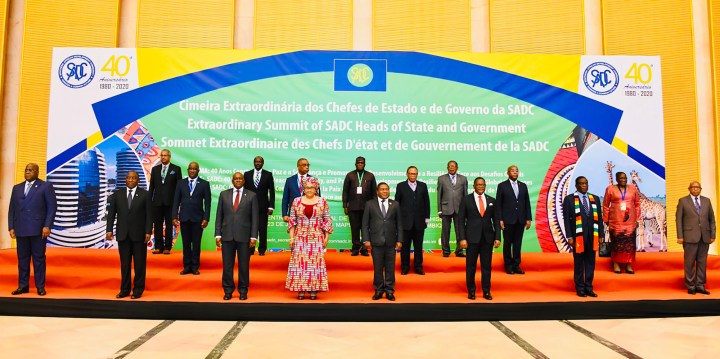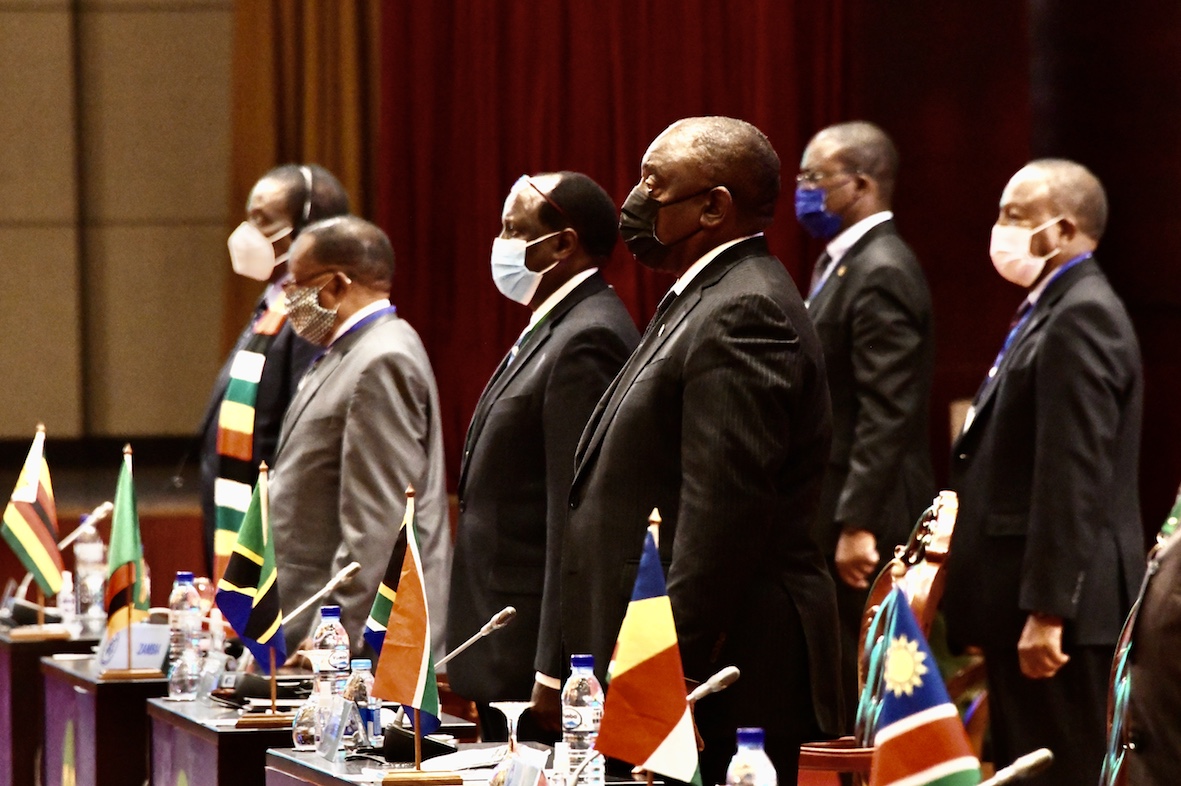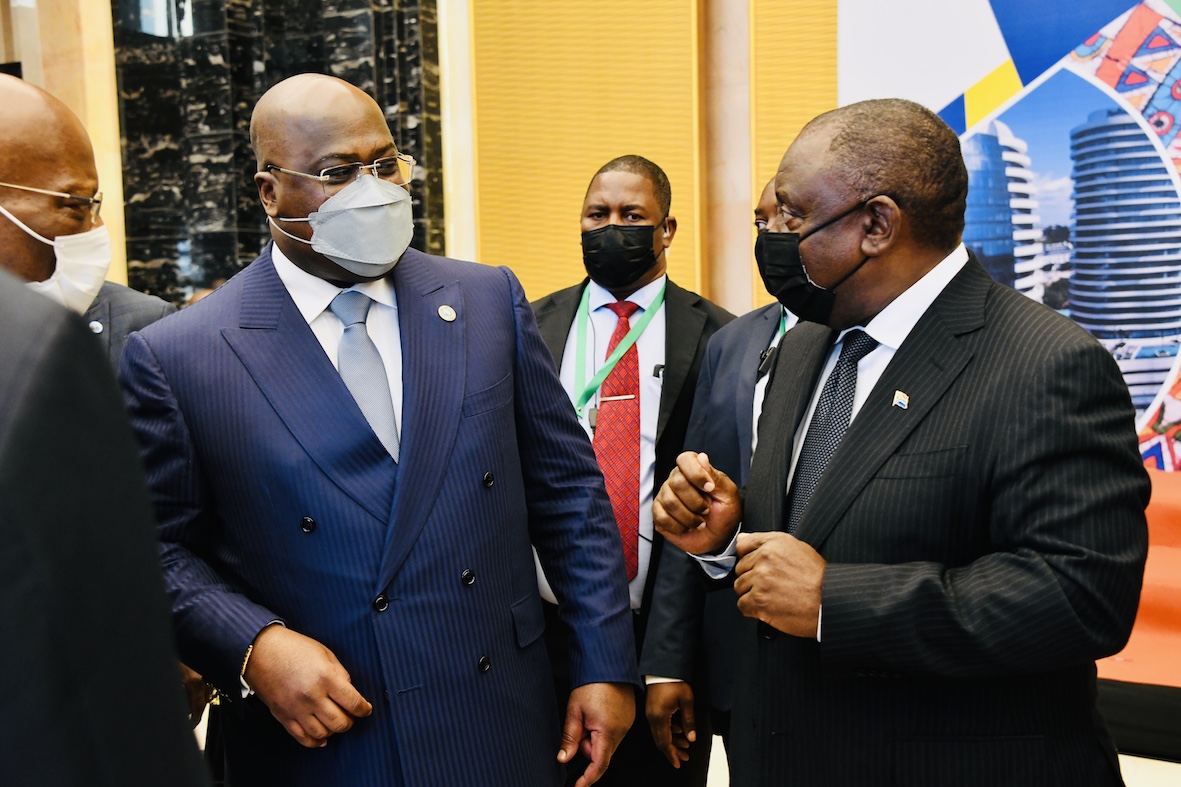CABO DELGADO
SADC leaders agree to deploy regional troops to fight Mozambique insurgency

Standby force will help Mozambique to combat the Islamic-State affiliated ‘al-Shabaab’ terrorists.
Regional leaders have agreed to send a southern African military force into Mozambique to help that country combat a violent Islamist insurgency in its northernmost province of Cabo Delgado.
A full summit of the 16-member Southern African Development Community (SADC) made this critical decision in Maputo on Wednesday. They did not disclose details of the deployment.
In a communiqué, they said: “Summit endorsed the recommendations of the Report of the Chairperson of the Organ on Politics, Defence and Security Cooperation and approved the Mandate for the SADC Standby Force Mission to the Republic of Mozambique, to be deployed in support of Mozambique to combat of terrorism and acts of violent extremism in Cabo Delgado.”

South African President Cyril Ramaphosa at the Southern African Development Community meeting in Maputo on Wednesday, 23 June 2021. It is likely that South Africa will be the largest contributor of soldiers and equipment to a southern African military force in Mozambique and it might end up footing a disproportionate share of the bill for the open-ended mission. (Photo: GCIS)
What remains unclear is the important detail of the size and composition of the SADC Standby Force which the regional leaders — including President Cyril Ramaphosa — agreed to.
In April a technical assessment mission of SADC military experts drafted a proposal for a regional force of almost 3,000 troops — comprising three battalions of infantry and two special forces squadrons armed with attack helicopters and warships — to enter Cabo Delgado to “combat and neutralise” the Islamic State-affiliated “al-Shabaab” insurgents and expel them from territory they now control.
It seems likely, but it is not certain, that the plan adopted on Wednesday is the one that Botswana President Mokgweetsi Masisi, the chairperson of SADC’s organ on politics, defence and security cooperation, recommended in his report.
Apart from the size and composition of the standby force and the timeline for its deployment, another critical unknown is how it will be financed.
It is likely that South Africa will be the largest contributor of soldiers and equipment to this force and it might end up footing a disproportionate share of the bill for the open-ended mission.
But analysts expect SADC will try to tap foreign countries and organisations — most likely the European Union — for financial support.
The summit decision to deploy SADC’s standby force surprised many observers and analysts who had believed that Mozambican President Filipe Nyusi was opposed to such a deployment, preferring to maintain greater control of the management of the insurgency by doing deals with individual countries or foreign private military companies for military support.
But it seems that his SADC peers put enough pressure on him to make him relent. For more than a year, other SADC governments have been urging Mozambique to accept the help it clearly needed to counter the insurgency.

President of the Democratic Republic of the Congo Félix Tshisekedi and South African President Cyril Ramaphosa at the Southern African Development Community meeting in Maputo on Wednesday, 23 June 2021. (Photo: GCIS)
Things came to a head late in March when the insurgents overran the coastal town of Palma, killing dozens of Mozambicans and a few foreign contractors at the nearby liquid natural gas processing plant at Afungi.
The attack prompted the French energy giant Total, the lead contractor, to suspend the Afungi project pending a return to security. This increased the pressure on Mozambique to take more decisive steps to properly secure the area and led to Wednesday’s agreement by Nyusi to accept a SADC standby force.
However, some analysts remain sceptical, saying they would like to see the details of the agreed deployment before passing final judgment. They suspect that Nyusi could still use the deployment to his advantage, using the regional troops merely as support for Mozambique’s security forces — which have so far proved sorely wanting in the fight against the insurgency. DM

















 Become an Insider
Become an Insider
A breathtaking display of regional unity. Has the SANDF got what it takes?
Guess who will be paying for this if it ever happens. Will the SADF have more luck than the US, or the French in Africa, in defeating a terrorist insurgent opponent.
At last there is a ray of hope for the thousands of civilians who have no means to speak for themselves nor defend themselves.
But the proof of the pudding is in the eating.
Easier cheaper faster cleaner option : 40 special forces and two drones with missiles. Ask the Somali pirates (if you can find them)